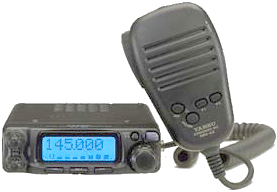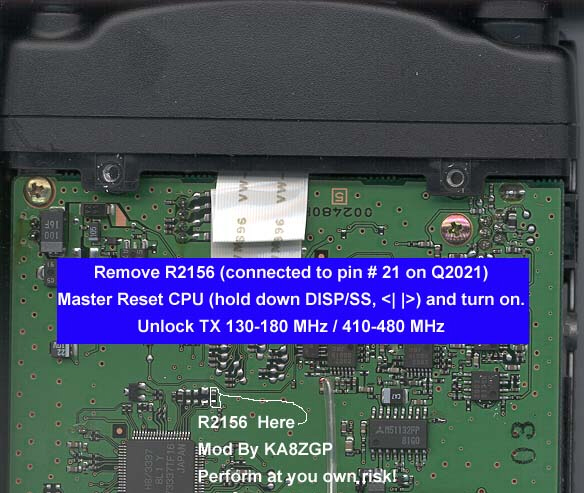

| Updated 2 April 2003 | Yaesu Vertex FT-90R Technical |
 MMI Stuff Technical Arizona Stuff Arizona Frequencies |
 General
General
RX: 100-230MHz, 300-530MHz, 810-999.975MHz (Cell blocked) TX: 144-146MHz or 144-148MHz (144MHz) 430-440MHz or 430-450MHz (430MHz) 300mA (Receive, Squelched) 9.5A (TX, 144MHz) 8.5A (TX, 430MHz) Receiver Transmitter Features Accessories Download FT-90R Manual Serial Numbers For all Yaesu/Vertex radios that I've seen, the serial numbers are in the format of YPXXXXXX where "Y" is the production year, "P" is the production run and "XXXXXX" is the radio's unique number. Slow CTCSS De-response The FT-90R (along with the FT-2600M) uses the MX-Com MX165C CTCSS Encode/Decode IC. The way that Yaesu incorporates it into the 90, makes the receiver mute several hundred mS late. Even though the FT-2600M uses the same chip, the de-response time on it is much more desirable. I figure that replacing the following FT-90R components with the same values that are used in the 2600M will give better performance: R2132-2.2MΩ, R2135-330kΩ, C2100-0.1uF. If anyone has a chance to test out these values in the FT-90R configuration, please let me know your results. I will try this out as soon as I have a chance. Squelch Problems The FT-90R has an infamous squelch problem that makes the receiver squelch and un-squelch at a very high rate while receiving a signal. This seems to be caused by extreme temperatures, high or low. Yaesu will do a squelch alignment for the price of $30 plus shipping. If you have access to a service monitor, you can align the squelch yourself with the aid of a $20 service manual. Radio Alignment Connect the radio to a 13.8VDC regulated power source for use on all steps. To access your Alignment Menu, you must build a plug that plugs into the microphone jack of the radio. Wire it so pins 1,4, and 6 are shorted together. Insert the plug while turning the radio on. Upon entering the Alignment Menu, take the plug out. For Receiver adjustments, use the RF signal generator set for 1kHz tone at ±3.5kHz deviation. Use the arrow buttons on the front panel to switch between each alignment item. To save levels when the RF Sig Gen is used, press the DIAL or the microphone's [VFO/MR] button. To adjust manual settings, rotate the DIAL. To change bands while in the Alignment Menu, press [SET] on the front panel. Press [DISP SS] on the front panel to save settings and exit (once alignment is complete). It is suggested that you refer to the "FT-90R Technical Supplement" provided by Vertex Standard. I am not responsible for any damage you may cause your radio.
Mic Switch Signals The Mic Switch lines are signal outputs from the microphone to control some functions of the radio from the mic end. This is done by changing the voltage on each line to a specified value. The following table shows which function corresponds with which voltage level combination. The labels listed below are according to the socket pin diagram. The levels listed below are those measured from my radio only.
Extended TX As far as I know this mod works, however, I take no responsibility for any damage you may cause your radio. It is also illegal to transmit outside of the amateur bands with this radio. This is for educational and emergency purposes only. 
|